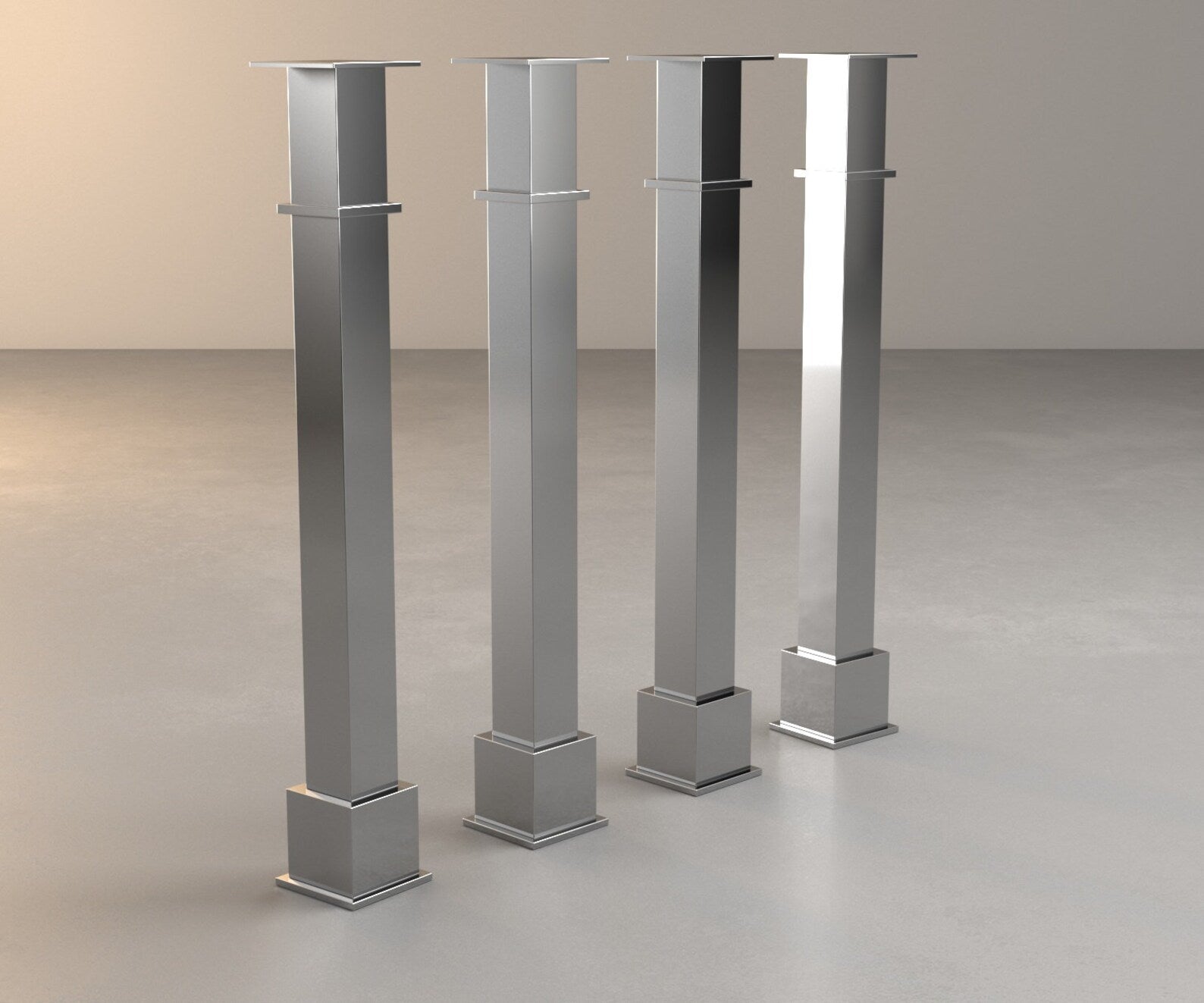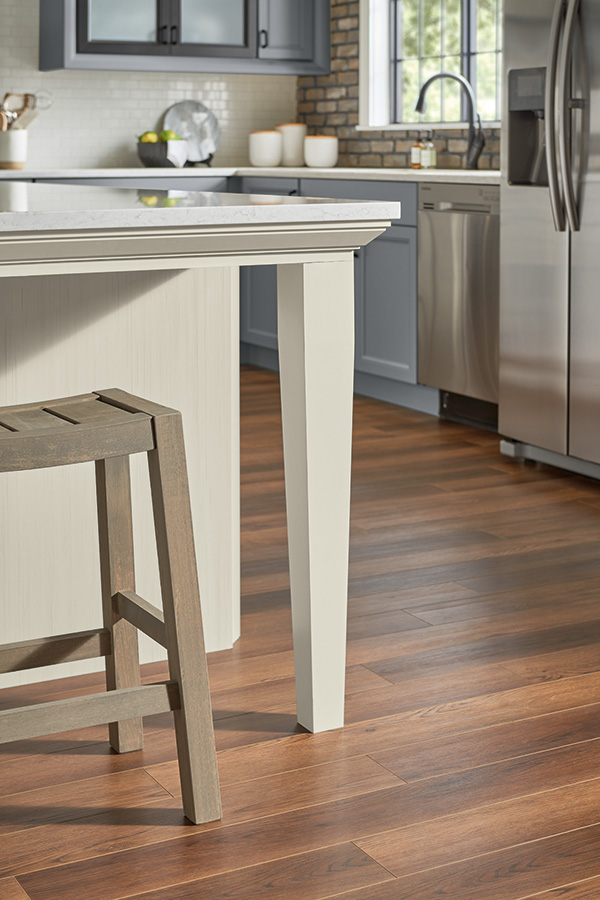How to Incorporate a Kitchen Island Leg into Your Kitchen Remodel
How to Incorporate a Kitchen Island Leg into Your Kitchen Remodel
Blog Article
Leading Considerations When Choosing a Cooking Area Island Leg for Modern Cooking Area Insides
In the world of modern-day cooking area insides, the choice of a kitchen area island leg is pivotal, influencing both visual appeals and functionality. Trick considerations include the choice of products that balance with modern layout, along with the leg's security and support to ensure enduring efficiency. Furthermore, height and percentages should be attentively evaluated to keep a cohesive look. As these components intertwine, they elevate even more inquiries regarding exactly how to achieve the best balance between style and usefulness, leaving one to ponder the ramifications of each decision on the total kitchen area experience.
Material Options
When it concerns choosing a kitchen island leg, material options play an important role in both aesthetics and functionality. kitchen island leg. The most usual products include wood, metal, and composite choices, each offering possible drawbacks and unique advantages
Timber is favored for its heat and traditional allure, providing an ageless appearance that matches different kitchen area styles. It is extremely flexible, permitting modification in terms of coatings and colors. Timber might require even more maintenance to avoid bending or damages from wetness.
Metal, on the various other hand, brings a modern and commercial panache to kitchen islands. Stainless-steel and wrought iron are preferred options, recognized for their durability and resistance to use. They can hold up against the rigors of day-to-day usage but may lack the warmth connected with wood.
Composite materials, such as crafted wood or synthetic blends, provide a balance in between cost, longevity, and looks. These alternatives are frequently designed to resemble the look of all-natural materials while offering resistance to spills and scratches.
Ultimately, the selection of product ought to straighten with the general kitchen layout and planned use, making sure that the cooking area island leg is both aesthetically appealing and functional.
Design And Style
The style and layout of a kitchen area island leg substantially add to the total visual of the room, matching the chosen product. When choosing the leg style, take into consideration the building style of the kitchen area. Streamlined, minimalist legs made of stainless steel or acrylic harmonize with modern styles, while ornate, turned timber legs enhance conventional or farmhouse appearances.
Furthermore, the surface of the leg can affect the visual influence; a polished chrome or matte black finish may stimulate modern beauty, while troubled timber speaks with rustic appeal. The leg's form also plays an important duty-- right, angular forms convey a more industrial feel, whereas curved or conical legs present a softer, more welcoming look.
Incorporating attractive elements, such as carvings or decorations, can add character and personality to the kitchen island, more enhancing its role as a focal point. Ultimately, the chosen leg design ought to not just align with the overall kitchen layout yet likewise show the homeowner's individual preference, making sure that the cooking area island comes to be a unified and practical centerpiece within the modern-day kitchen area inside.
Elevation and Proportions
Attaining the best elevation and proportions for a cooking area island leg is vital for both functionality and aesthetic appeals. Kitchen area official source islands commonly vary in height from 28 to 36 inches, relying on their planned use-- whether as a food preparation surface, eating area, or workspace. Standard kitchen counter elevation is approximately 36 inches, making it crucial that the legs you choose complement this elevation to provide a seamless, incorporated look.
Percentages likewise play a crucial function in the aesthetic balance of the cooking area. A slender leg may be ideal for a minimalistic or modern island, while a more considerable leg might be needed for rustic or standard designs.
When picking the height and percentages of the cooking area island leg, keep in mind the general layout theme of your cooking area. This focus to detail not only enhances the functionality of the room yet also adds to a visually appealing and cohesive interior style.
Security and Assistance
Consistently guaranteeing stability and assistance in kitchen area island legs is important for both security and functionality. A well-constructed cooking area island should endure day-to-day use, consisting of weight from devices, cooking, and celebrations. For that reason, the selection of legs need to prioritize robust materials and designs that can supply ample assistance.
When evaluating security, consider the leg's product-- light weight aluminum, steel, or wood commonly provide exceptional strength compared to lighter options. In addition, the design ought to include a wide base to distribute weight uniformly and lower the risk of wobbling or tipping. Legs developed with an A-frame or cross-bracing can substantially boost stability.

Integrating these considerations will certainly not just boost the total safety of the cooking area area but additionally boost the long life and functionality of the kitchen island, making it a beneficial centerpiece in modern kitchen interiors.
Completing Touches
When it comes to finishing a kitchen island, thoughtful finishing touches can substantially boost both its visual appeal and performance. Choosing the ideal leg design is important, yet complementing it with suitable details can transform the entire area. Take into consideration adding ornamental components such as toe kicks or walls that match the cabinets or floor covering to Get the facts produce a smooth appearance.

A cohesive shade combination and material selection will certainly boost the kitchen area island, making it a fascinating focal point. By paying attention to these finishing touches, home owners can create a kitchen island that is both lovely and practical, providing to their way of life and layout choices.
Conclusion

In the world of contemporary cooking area insides, the choice of a kitchen island leg is crucial, affecting both aesthetics and capability.The design and style of a kitchen island leg substantially contribute to the total visual of the space, enhancing the selected product.Achieving the ideal height and proportions for a cooking area island leg is essential for both capability and aesthetic appeals.Continually guaranteeing stability and assistance in cooking area island legs is vital for both safety and functionality.In summary, picking a kitchen island leg for modern-day insides requires cautious factor to consider of product selections, layout style, elevation, proportions, and stability.
Report this page